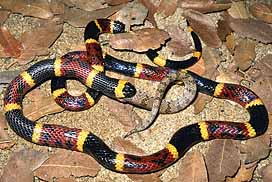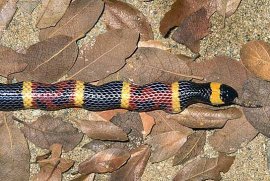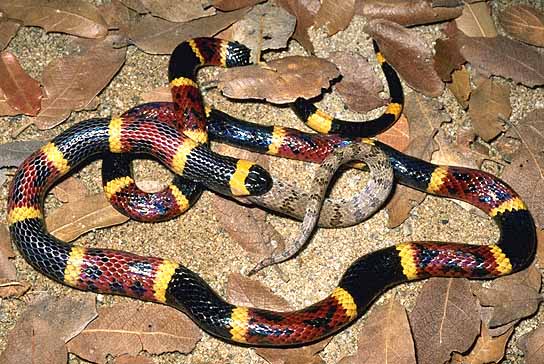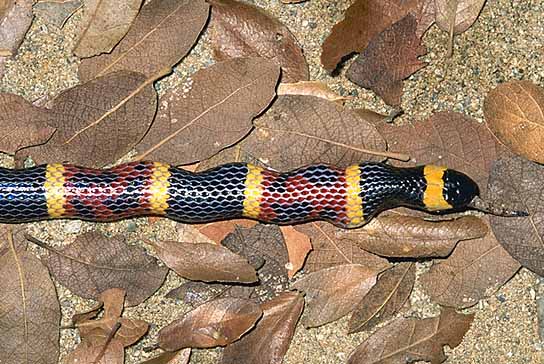Snakes
Description
22-47 1/2" (55.9-120.7 cm). Body
encircled by wide red and black rings separated by narrow yellow
rings. Head uniformly black from tip of blunt snout to just behind
eyes. Random black spots in red rings. Scales smooth and shiny, in
15 rows. Anal plate divided.
![]()
Warning
Coral snakes belong to the same family as
the highly venomous cobras, kraits, mambas, and sea snakes. Unlike
vipers and pit vipers, coral snakes have fangs that are fixed in
position on the front part of the upper jaw and cannot be folded
back. Coral snake venom is strongly neurotoxic, affecting the
victim’s nervous and respiratory systems, and bites can be fatal. Do
not handle these snakes!
Several harmless snakes have color patterns resembling that of
the coral snakes. Coral snakes always have a blunt black snout and
red, yellow, and black rings that completely encircle the body.
There is a yellow ring on both sides of every red ring. Remember:
"Red touch yellow, kill a fellow." The harmless Scarlet Kingsnake (a
race of Milk Snake) looks like a coral snake but has a red snout,
and the red and yellow rings are separated by black rings: "Red
touch black, friend of Jack." In the nonvenomous Scarlet Snake, the
rings don't completely circle the body as they do in coral snakes,
the belly is white, the snout is red and pointed, and the red areas
are ringed in black. How to
avoid and treat snakebites
Range
Southern Arkansas, w. Louisiana, s. Texas into ne. Mexico.
Discussion
This species was formerly considered a subspecies of the Eastern Coral Snake. Like its kin, it is highly venomous and should never be harrassed or handled.




